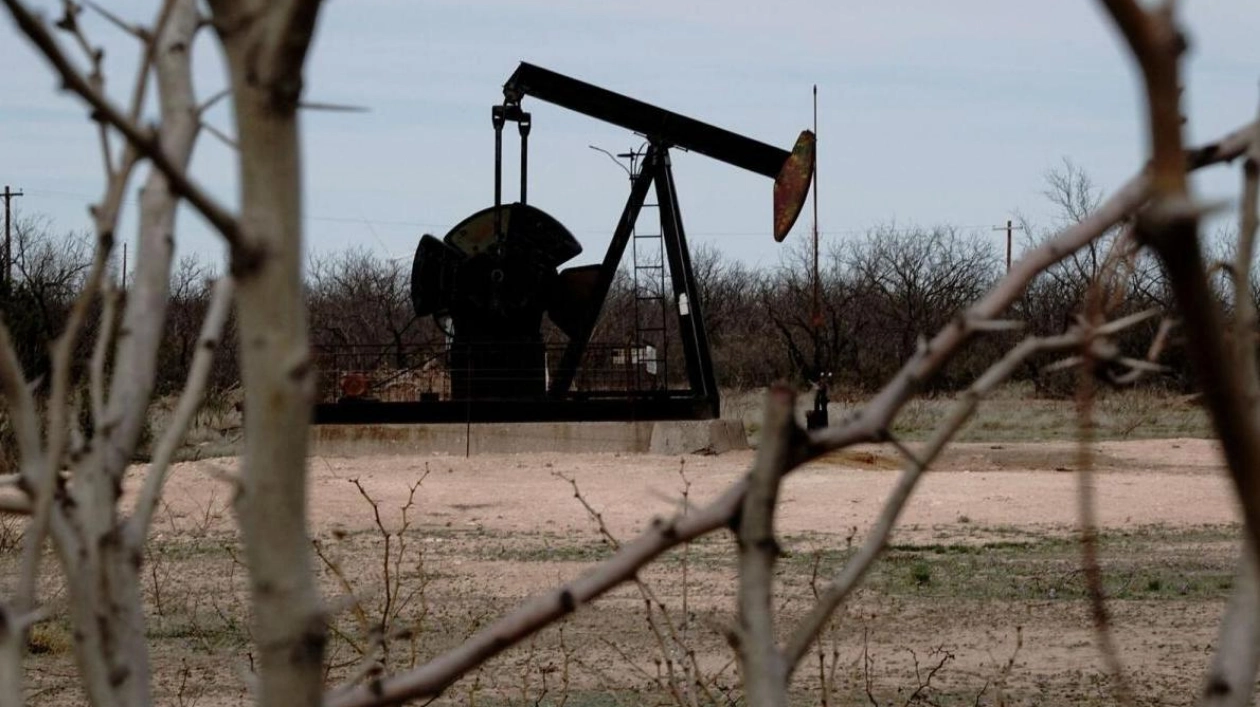A pump jack extracts crude oil from the Yates Oilfield in West Texas’s Permian Basin. — Reuters file
Oil prices have faced challenges since the start of the week as the adverse impacts of Hurricane Rafael on US oil production begin to wane. This reduction in the risk of production disruptions and supply shortages has enabled output to normalize, influencing price dynamics. Oil markets remained largely stable on Thursday, with traders cautious following earlier declines due to a stronger US dollar and concerns over increasing supply amidst sluggish demand growth. Brent crude futures slipped by 3 cents to $72.25 per barrel at 0937 GMT, while US West Texas Intermediate crude futures declined by 7 cents to $68.36.
Several factors in the global oil market could soon lead to a price decline, according to analysts. These factors are primarily linked to supply-demand imbalances, with some also influenced by political and economic developments in the US and major economies. The hurricane significantly impacted regions where oil and natural gas production is robust in the US. Last week, oil production in the Gulf of Mexico decreased by approximately 16%, resulting in a supply deficit and a surge in global prices. According to the US Bureau of Safety and Environmental Enforcement, oil production dropped by 482,790 barrels, and natural gas production fell by 310 million cubic meters as of last Sunday.
Last year’s price surge, exceeding $90 per barrel, contributed to a reduction in US commercial crude oil inventories by about 53 million barrels from June to September 2023. Mohamed Hashad, chief market strategist at Noor Capital on Oil Prices, noted in a report that despite low demand forecasts and speculation about potential supply-increasing policies under the Trump administration, prices largely disregarded these factors. US commercial oil inventories recently dropped to 415 million barrels, the lowest in several years, fueling the rise in US crude prices.
Global oil prices soared past $124 per barrel during Russia’s invasion of Ukraine. However, as US oil inventories rose to 467 million barrels in June last year, prices retreated to $67. Subsequently, declining inventories pushed prices above $90 once more. Oil prices are also influenced by the persistent strengthening of the US dollar, as a higher dollar value typically causes all commodities priced in the currency to decrease, a well-established correlation in financial markets. These factors collectively resulted in a negative close for US oil futures on Tuesday, with a decline of around 2.75%.
The US dollar has continued to strengthen since Donald Trump’s recent election as US president in 2024, with financial markets reacting positively to his return to the White House. Hashad observed that although Trump has criticized excessive dollar appreciation, he has not outlined any specific measures to weaken the dollar, leaving room for further increases. There are concerns among oil market bulls about the scale of China’s stimulus package, as many fear it may not be adequate to positively impact the world’s second-largest economy. Oil demand is closely tied to growth rates, as higher production to achieve growth naturally requires increased oil consumption, driving up demand.
The newly elected US president is anticipated to implement policies supporting fossil fuel production in the US and encouraging further oil and natural gas extraction. This would boost production levels but negatively impact prices. Hashad noted that Trump’s victory has sparked speculation about the potential repeal of recent clean energy legislation under the Biden administration, potentially canceling billions in incentives for renewable energy use. Additionally, it is expected that the US Treasury Department may review current policies offering companies tax breaks worth billions for using clean energy, such as green hydrogen.
Source link: https://www.khaleejtimes.com






